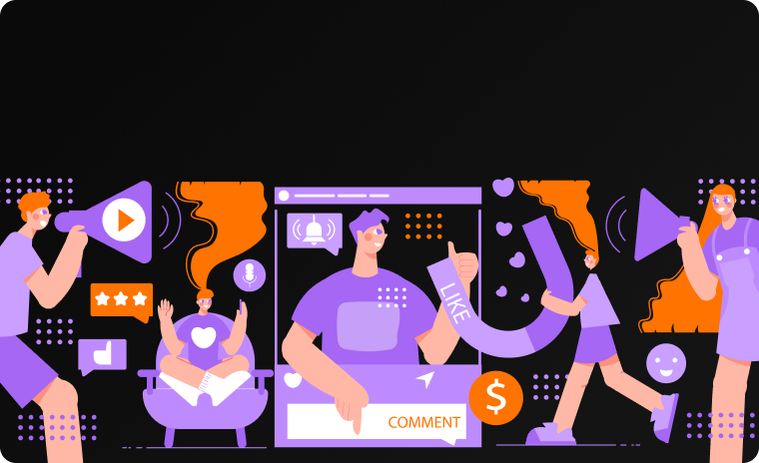The BrandBoost App Template Unleashes Marketing Synergies
Everybody was blogging at the beginning of the 2000s, remember? Kids, housewives, sports fans, travelers… It looked like WordPress had unleashed the creative powers of millions of people who apparently had so much to tell. Then, in 2005, an obscure video sharing platform, whose possible impact probably very few people could foresee, entered our lives. With YouTube's emergence, we learned that blogging (or vlogging) could be the basis for a sound, lucrative economic model. Today top-3 highest-paid YouTubers, Mr. Beast, Jake Paul, and Markiplier rake in $54 million, $45 million, and $38 million, respectively.
YouTubers, at least initially, were like TV stars: You needed to be at your desk to tune in to watch their performances. The rise of smartphones and social media changed that. These two combined to multiply the number of visual content creators and transformed the way creators engaged with their fans. A smartphone and a social media account were the only prerequisites for becoming a content creator.
The average number of social media accounts a person owns has grown from 4.8 in 2014 to 8.4 in 2020. The success of content creators was one of the prominent factors that drove this growth. A new economy gradually took shape around the interactions transpiring on social media. Twitter, Instagram, and later TikTok not only became the stages where content creators interacted with their fans, but they also facilitated the monetization of those interactions in this period. How many times a message was viewed, liked, and shared helped marketers gauge the potential of content creators as a marketing channel.
Individuals among content creators who could generate and guide interest came to be known as "influencers." Rachael Cihlar from the influencer marketing platform Mavrck predicts that the number of people self-identifying as creators will surpass the 1 billion mark in the near future. This prediction is in tune with the projections about the growth of the influencer market: Amounting to just $1.7 billion in 2017, the influencer market has grown to $13.8 billion in 2021 and is projected to surpass the $15 billion mark this year.
Of all the demographic groups, one stands out regarding how they interact with influencers: Gen Z. Influencers have an outsized impact on Gen Z's purchasing habits. That's because people in this demographic group tend to spend more time on social media, and most of them were born into a world where influencers were already household names. An Ipsos Connect study commissioned by Google discovered that 70 percent of adolescent YouTube subscribers found YouTubers more relatable than traditional celebrities. It turns out that 6 in 10 teenagers listen to, take advice from and relate to influencers more than traditional celebrities. Previous generations may have a low opinion of influencers, but Gen Zers see them as role models. If you want to reach out to young people, leveraging the influencers' credibility in the eyes of Gen Zers is the way to go.
Business leaders were quick to realize the value influencers offered for marketers. Thanks to social media and influencers, big companies could "act small again," as Jay Baer, entrepreneur and marketing guru, puts it. Companies can tap into the hitherto out-of-reach customer groups by finding influencers that appeal to different customer profiles and curating campaigns that target niche segments.
Decision-makers have already found out that influencers are more effective in generating demand than conventional forms of marketing. Influencer marketing was measured to generate between $5.20 to $6.50 for every dollar spent. A well-chosen influencer can introduce more precision into a firm's marketing efforts, letting it focus on high-impact customer segments.
However, there is a caveat. As a business leader, you may decide to work with influencers to boost your brand's online presence, but that's easier said than done. 61 percent of marketers think finding suitable influencers for a company is a real challenge.
Mindful of this challenge, Peaka has recently published an app template that brings together brands and influencers: BrandBoost. The template allows businesses to search through influencer profiles to find the most suitable influencer for a particular campaign. Additionally, BrandBoost can be used to build a two-sided marketplace where brands and influencers list their requirements to find the best match.
Making the wrong choice on influencers you work with can come back to haunt your brand down the road. Similarly, an influencer can cripple her career working with brands that are not a good fit for her audience. BrandBoost lays the ground for a marketplace that can minimize these two risks. Social media partnerships do not have to be hit-or-miss affairs. BrandBoost makes sure you get your time and money's worth.




 Please
fill out this field
Please
fill out this field









